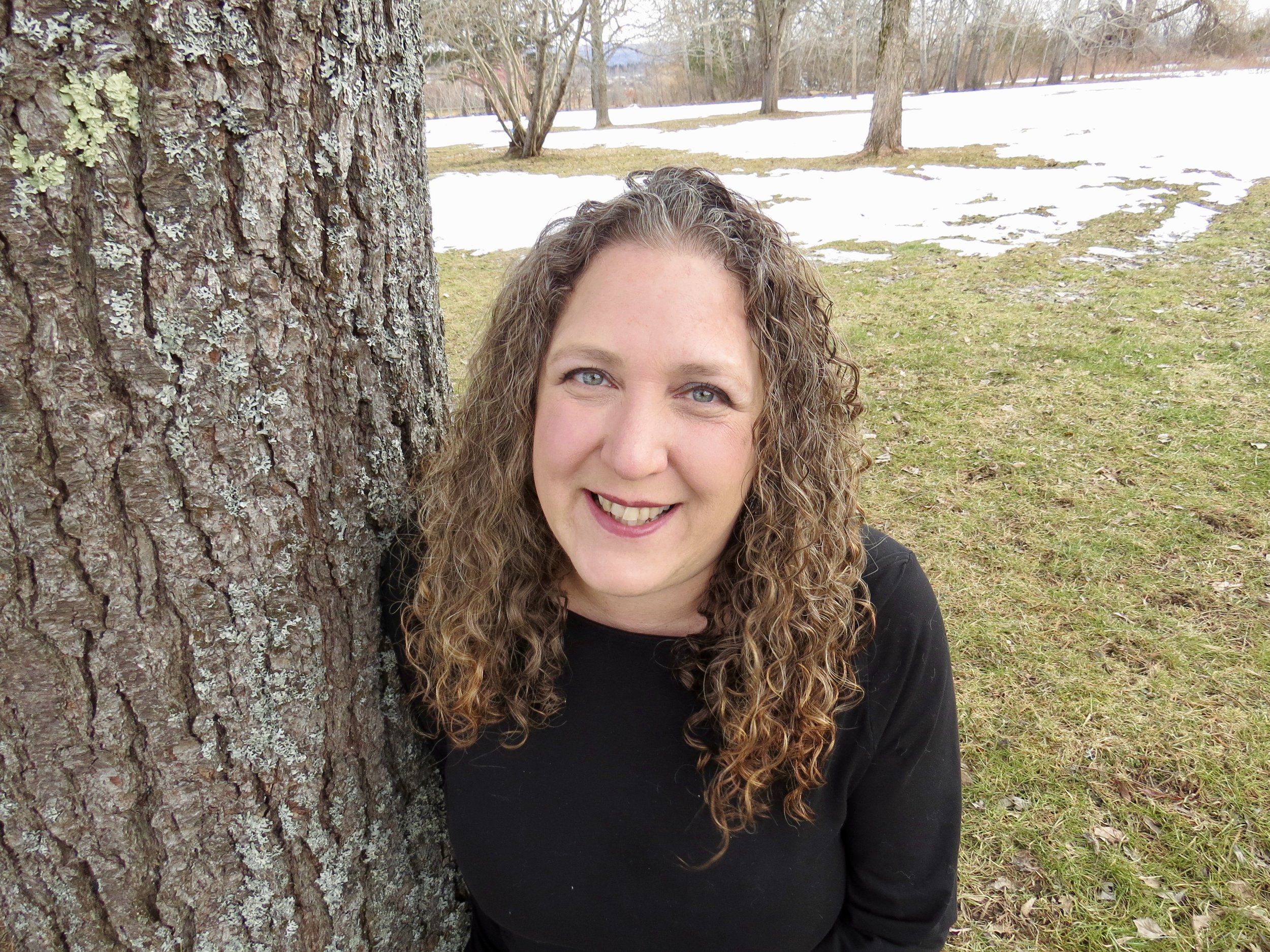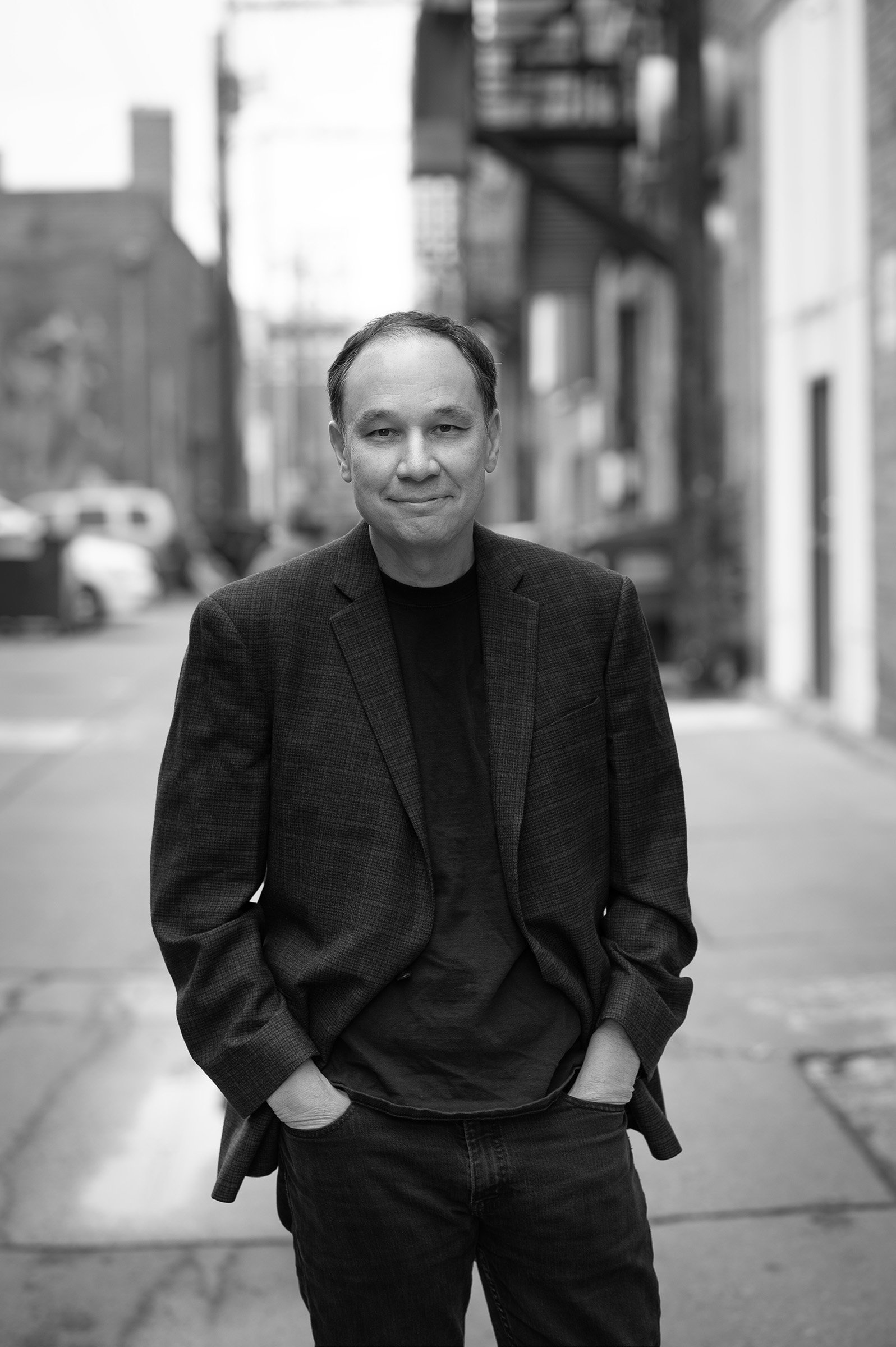With Erica Wiggins
Photo Credit: Audrey Michaud-Peters
Where did the idea for The Berry Pickers come from and how long did you spend creating it and writing its story? Did you need to complete research in order to flesh it out the way you envisioned?
The story is inspired by the stories my dad tells. When he was young, his family went to the fields in Maine each summer to pick berries. He tells some crazy stories about ghosts, fights, and good times. He laughs a lot. I think it was a very happy time for him when he was a kid. When he found out that I was taking writing courses, he said I should write about the Mi’kmaq berry pickers. I told him that I didn’t write non-fiction, but he would not be deterred. So, in the summer of 2017, we hopped in my Prius and headed to Maine, on a father-daughter road trip. He showed me where they used to pick berries, the lake where they used to swim, and the supply store where they used to get supplies. I recorded his stories and I still have those recordings somewhere. While on the trip, a story began to form in my head and the rest is history. The Berry Pickers is fiction but inspired by those stories. I wrote the first chapter and agonized over it for two years before I moved on. I was lucky enough to attend the MFA program at the Institute of American Indian Arts and got to work with some remarkable mentors and classmates on most of the book. Their advice and careful attention to the manuscript made it the story I wanted to tell.
There was some research. I have never been to Boston for instance. I wanted to go and just walk around and get a feel for it, but the pandemic prevented that. So, I asked a friend, a fellow writer who lives and knows that area and she ‘walked’ me around Boston with Google Maps. I hope I did the city justice.
Altogether, it took about four years to write it. And there were so many people who had a hand in making it a better story and me a better writer. I am so grateful to them all.
Tell me about your writing space. Where do you spend your time writing and creating and do you need to create a certain atmosphere to get you in the headspace of writing? A certain tea perhaps or music on?
I like to write in the quiet. I live alone with my dog and cat, so it is generally quiet. I do find that I need extended periods of time to sit and write. I can’t write for 15 minutes and then walk away and come back later. I need an extended time. I can sit, on a Saturday, from 8 am to 9 pm, stopping only to eat. I love those days. Not everything I write in these marathons is worth saving but I love the sense of getting something done, ready to be molded later. I like music, nothing with words or I will sing along. If I don’t know the song, I find myself listening to the lyrics. There is an album on Apple Music called Classical Music for Meditation and Yoga and I find that is my go-to. Unless I’m having a tough time getting started and then it’s Pink Floyd’s The Division Bell. I don’t know why, but that album stirs my creativity.
How did you select your character’s names? Did they spark immediately in your mind or were they based on people?
Joe is my grandfather’s name and Lewis is my great-grandfather's name. Ruthie is a name I always liked and thought that if I ever had a daughter, I might like to name her that. Leah and Cora are the names of two friends from high school. When I was writing those two characters, I had no intention of writing them as my friends but in my mind, they look a bit like them, so I gave them their names. I asked them and they were okay with it. The characters don’t have the same personalities necessarily, but they looked like them.
What was the hardest scene to write and for what reason? Did it require the most research, or take the longest, or was the hardest to emotionally process?
The hardest scene. The book is full of difficult scenes so that’s a hard question. I think maybe when Norma loses the baby. I felt so much for her. I wanted to crawl inside the story and give her a hug. I have never experienced this, so once again, I hope that I did right by the experience and gave it the care it deserves.
Did you ever consider a third perspective, or did you always know that this story would be told by Joe and Norma?
I originally thought the story would be told only by Joe. But Norma snuck up on me and demanded to tell her own story. And I listened. I think it worked out well.
How did publishing your first book change your process of writing?
I’m not really sure. I think I would say that it gave me a little more confidence to just write. If someone liked this story, they might like the next so just keep writing.
To gain a little insight into your creative self, if you had to describe yourself as a writer in three words, what would they be?
Determined. Hardworking. Insecure.
What is your “must-read” book recommendation and what book has had the most impact and influence on your writing?
This is such an unfair question. There are so many books out there that have inspired me. When I’m stumped or when I can’t seem to get into the groove, I will pick up The Underpainter by Jane Urquhart. I know that I’ve read this book at least three times. Sometimes, I just read the first couple pages and sigh with contentment. I love all her work, but this is the one I turn to. And I would have to say Heave by Christy Ann Conlin. This was the first book that I really recognized myself in. It takes place in the Valley and has characters like people I know. It made me think that if this person could write such an amazing story that takes place in the Annapolis Valley, then maybe I could too.
What advice would you give to aspiring authors who are trying to navigate the publishing world?
Ask for help, never be afraid to ask people for advice. Don’t be discouraged, rejection is part of the process. If you believe in what you are writing, keep going.
Do you have another novel in the works or is there a new project that you’re working on? When can readers anticipate it?
I have a short story collection Waiting for the Long Night Moon, but I’m not sure when it will be out. It will also be coming from HarperCollins. I am working on something new, but I am keeping that close to my heart. I want to make sure I can do the story justice before sending even a little bit of it out into the universe.























